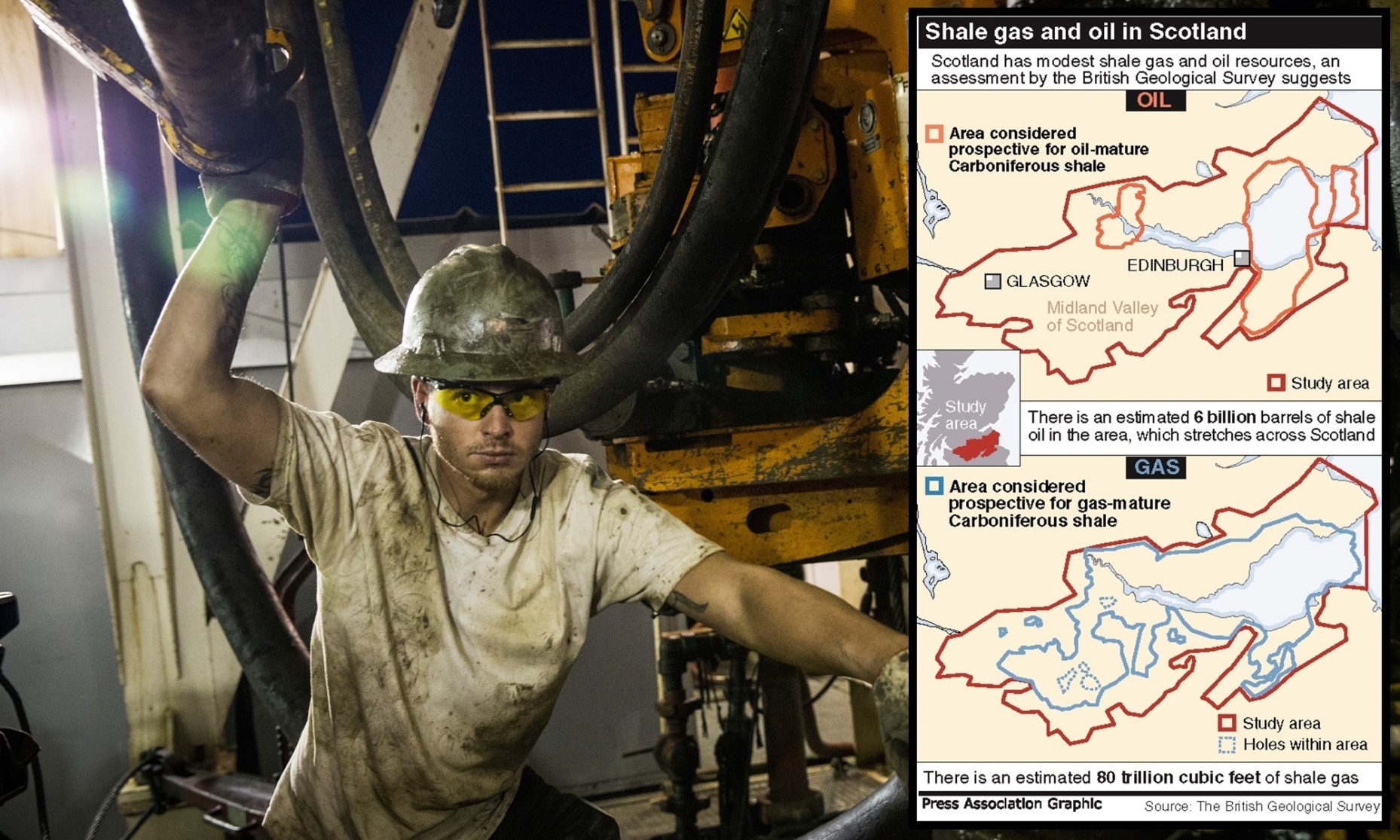Scotland has shale resources to fuel around 27 years’ worth of gas demand, according to a new survey.
However, environmental groups have claimed the research, which focused on an area stretching from the west and south-east of Glasgow to St Andrews and included Edinburgh and Stirling, proves the controversial idea of fracking is a “non-starter”.
The British Geological Survey of the Midland Valley estimated there could be shale gas resources of 80 trillion cubic feet, considerably lower than the 1,300 trillion cubic feet thought to be in the Bowland shale basin in northern England.
There is an estimated six billion barrels of shale oil in the area, slightly more than the central estimate of 4.4 billion barrels in the Weald Basin in southern England.
The amount of gas and oil that can be extracted from the shale is likely to be far lower than the total resource. In the US, shale oil exploration has only been able to access up to 10% of the total oil.
Energy and planning specialist at Pinsent Masons, David Ross, said the gas supply would “represent a valuable source of energy for the wider UK market”.
He added: “Scotland has long been at the forefront of energy innovation and continued improvements in our renewables output, in tandem with developing a new shale oil and gas industry, offers a diversity which goes some way to improving the UK’s security of energy supply.”
WWF Scotland director Lang Banks said the assessment showed there was not going to be a shale gas or oil “bonanza” and called for ministers to commit to leaving fossil fuels in the ground.
He added: “Whether it is shale gas, coal or oil, Scotland really needs to begin transitioning away from polluting fossil fuels.”
UK Business and Energy Minister Michael Fallon said: “We know that shale gas alone won’t be able to supply all of our energy needs but the environmentally responsible exploration of shale gas could contribute to our energy mix.”
Scottish Energy Minister Fergus Ewing said: “I note the publication of this British Geological Survey report, which highlights that only relatively modest amounts of shale gas and shale oil are likely to be present in the Central Belt, only a fraction of which could be realistically recovered.”
“We are taking a balanced, evidence-based approach to the development of unconventional gas and convened an expert scientific panel on unconventional oil and gas to examine the issue.”
